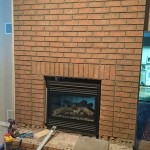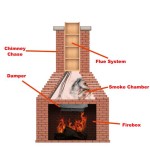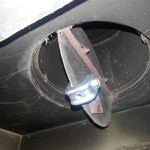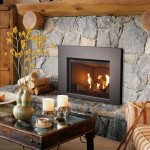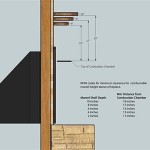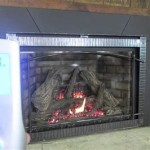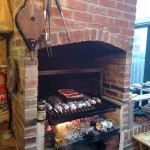How to Build an Outdoor Gas Fireplace
An outdoor gas fireplace can transform a patio or backyard into a welcoming and sophisticated entertainment space. Unlike wood-burning fireplaces, gas fireplaces offer convenience, control, and reduced emissions, making them an increasingly popular choice for homeowners. This article provides a comprehensive guide to building an outdoor gas fireplace, covering essential considerations, planning, construction techniques, and safety precautions.
Planning and Design Considerations
Before commencing any construction, thorough planning and design are crucial. This stage involves determining the fireplace’s size and style, selecting appropriate materials, and ensuring compliance with local building codes and ordinances. A well-researched plan minimizes potential issues during construction and ensures the finished fireplace meets aesthetic and functional requirements.
Size and Location: The dimensions of the fireplace should be proportional to the surrounding outdoor space. A massive structure in a small yard can appear overwhelming, while a diminutive fireplace might be dwarfed in a sprawling landscape. Consider the intended use of the fireplace. Will it primarily serve as a decorative element, or will it be used for warmth during cooler months? The location should also be carefully selected, taking into account factors such as prevailing winds, proximity to flammable materials (e.g., trees, fences), and views from the house and yard. Adequate clearance from structures is paramount to prevent fire hazards.
Style and Materials: The fireplace’s design should complement the existing architectural style of the house and the overall aesthetic of the outdoor area. Options range from rustic stone fireplaces to sleek, modern designs using concrete or metal. Material selection significantly impacts both the appearance and durability of the fireplace. Natural stone, such as flagstone or river rock, offers a timeless, organic look, while manufactured stone veneers provide a more uniform and cost-effective alternative. Concrete blocks offer a durable and customizable base, and metal provides a contemporary, industrial feel. Consider the climate and weather conditions in your area when selecting materials. Materials should be resistant to moisture, freezing temperatures, and UV degradation.
Gas Line and Ventilation: Planning the route for the gas line is a critical aspect of the design process. Consult with a licensed gas plumber to determine the appropriate size and type of gas line needed based on the BTU (British Thermal Unit) rating of the fireplace insert. The gas line must be buried underground at a depth that complies with local codes, and it should be clearly marked to prevent accidental damage. Adequate ventilation is essential for safe operation. The fireplace design should incorporate vents or openings to allow for proper airflow and prevent the buildup of carbon monoxide. The specifications provided by the fireplace insert manufacturer should be strictly followed regarding ventilation requirements.
Building Codes and Permits: Before starting construction, research local building codes and obtain the necessary permits. These regulations often dictate specific requirements for fireplace construction, including setbacks from property lines, foundation specifications, and gas line installation standards. Failure to comply with building codes can result in fines, project delays, and even the need to dismantle the structure. Contact the local building department to inquire about permit requirements and to obtain the necessary application forms.
Construction Process
Once the planning and design phase is complete, the construction process can begin. This involves preparing the foundation, building the fireplace structure, installing the gas line and fireplace insert, and finishing the exterior.
Foundation Preparation: A solid foundation is crucial for the stability and longevity of the fireplace. The foundation should be constructed below the frost line to prevent movement caused by freezing and thawing of the ground. Excavate the area for the foundation to the required depth, typically 12 to 24 inches, depending on local frost line conditions. Pour a concrete footing, ensuring it is level and adequately reinforced with rebar. The size of the footing should be sufficient to support the weight of the fireplace structure. Allow the concrete to cure completely before proceeding with the next step.
Building the Fireplace Structure: Construct the fireplace structure using concrete blocks, bricks, or other masonry materials. Start by laying the first course of blocks or bricks on top of the cured concrete footing. Use mortar to bind the blocks or bricks together, ensuring each course is level and plumb. Stagger the joints between courses for added strength and stability. Incorporate any necessary vents or openings into the structure as you build. The dimensions of the fireplace opening should be based on the size of the fireplace insert. Ensure that the opening is large enough to accommodate the insert but not so large that it compromises the structural integrity of the fireplace. Consider adding a firebox liner made of firebrick to protect the surrounding masonry from the intense heat of the flames.
Gas Line Installation: This step should only be performed by a licensed gas plumber. The plumber will run the gas line from the main gas supply to the fireplace location, ensuring it is properly buried and protected. They will also install a shut-off valve near the fireplace for safety. The plumber will connect the gas line to the fireplace insert according to the manufacturer's instructions. A pressure test should be conducted to verify that there are no leaks in the gas line before proceeding.
Fireplace Insert Installation: Install the fireplace insert according to the manufacturer's instructions. The insert typically consists of a burner, a control valve, and a decorative log set or other media. Connect the gas line to the burner, ensuring all connections are tight and secure. Test the fireplace to ensure it is functioning correctly and that the flames are burning properly. Adjust the gas pressure if necessary to achieve the desired flame height and heat output.
Exterior Finishing: Once the fireplace structure is complete and the gas line and insert are installed, the exterior can be finished. Apply a layer of mortar to the surface of the blocks or bricks, and then adhere the selected facing material, such as natural stone, manufactured stone veneer, or stucco. Use a level and plumb bob to ensure that the facing material is installed straight and evenly. Grout the joints between the stones or veneers to create a finished look. Consider adding a mantle or other decorative features to enhance the appearance of the fireplace.
Safety and Maintenance
Safety is paramount when building and operating an outdoor gas fireplace. Regular maintenance is also essential to ensure its continued safe and efficient operation.
Gas Leak Detection: Regularly inspect the gas line and connections for leaks. Use a soapy water solution to check for leaks by applying it to the connections and looking for bubbles. If you suspect a gas leak, immediately shut off the gas supply and contact a licensed gas plumber. Never use an open flame to check for gas leaks.
Carbon Monoxide Safety: Install a carbon monoxide detector in the vicinity of the fireplace to alert you to the presence of this odorless and colorless gas. Carbon monoxide is a byproduct of combustion and can be deadly if inhaled in high concentrations. Ensure that the fireplace is properly ventilated to prevent the buildup of carbon monoxide.
Clearance from Combustibles: Maintain adequate clearance between the fireplace and any combustible materials, such as trees, fences, and furniture. Follow the manufacturer's instructions regarding minimum clearance requirements. Never leave a burning fireplace unattended.
Regular Cleaning and Inspection: Clean the fireplace regularly to remove any debris, such as leaves, twigs, or spider webs. Inspect the burner and gas line for any signs of damage or corrosion. Have the fireplace professionally inspected and serviced annually to ensure it is functioning safely and efficiently.
Professional Assistance: While some aspects of building an outdoor gas fireplace can be accomplished by experienced DIYers, certain tasks, such as gas line installation and electrical work, should only be performed by licensed professionals. Hiring qualified contractors ensures that the work is done safely and in compliance with local codes.
Building an outdoor gas fireplace is a significant undertaking, but with careful planning, proper construction techniques, and a focus on safety, it can be a rewarding project that adds value and enjoyment to your outdoor living space. Remember to consult with local building codes, obtain the necessary permits, and prioritize safety throughout the entire process.

How To Make An Outdoor Gas Fireplace With Diy Pete

How To Make An Outdoor Gas Fireplace With Diy Pete

How To Plan For Building An Outdoor Fireplace

How To Build A Gas Fire Pit Woodlanddirect Com
:max_bytes(150000):strip_icc()/chrisjulia-971f3f9eb708447bbd364fc7f4a16280.jpg?strip=all)
10 Free Outdoor Fireplace Construction Plans

Diy Outdoor Fire Table Hamilton Park Home

How To Build An Outdoor Gas Fireplace Fireplaces Direct Learning Center
:max_bytes(150000):strip_icc()/milkpaint-286c9ee63b604ca1aaecac5233c8a3f3.jpg?strip=all)
10 Free Outdoor Fireplace Construction Plans

How To Make An Outdoor Gas Fireplace With Diy Pete

How To Build A Gas Fire Pit Woodlanddirect Com
Related Posts

